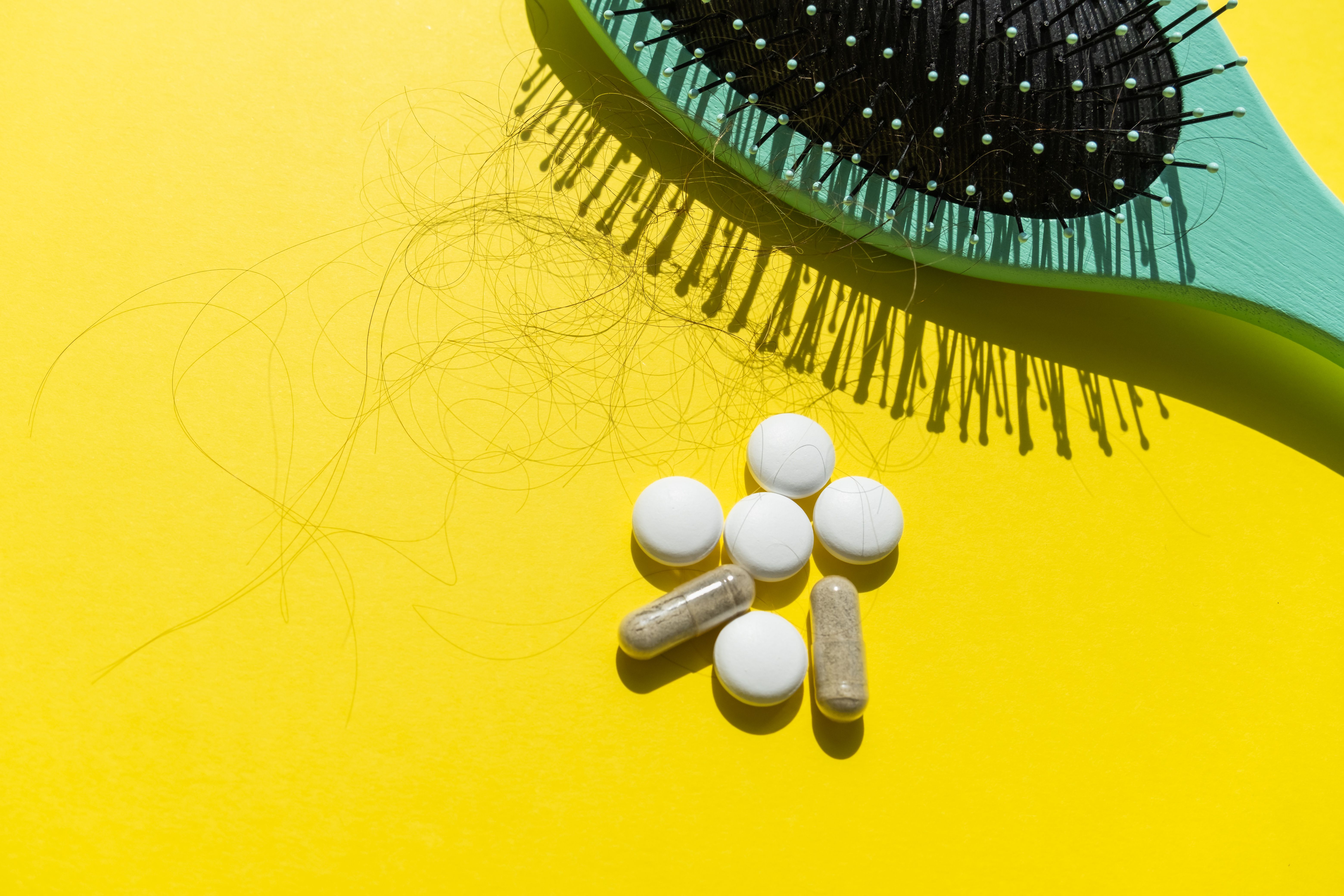- Center on Health Equity & Access
- Clinical
- Health Care Cost
- Health Care Delivery
- Insurance
- Policy
- Technology
- Value-Based Care
Analysis Highlights Comparative Efficacy of Alopecia Areata Drugs
Investigators found that Janus kinase inhibitors were effective in a dose-dependent manner.
A new study offers insights into the relative efficacy of various treatments for alopecia areata (AA), suggesting that deuruxolitinib (Leqselvi; Sun Pharma) at a dosage of 12 mg twice daily for 24 weeks led to the most complete results among those evaluated. The study was published in the Journal of Cosmetic Dermatology.1
The JAKis evaluated were effective in a dose-dependent manner, the study found. | Image Credit: Victoria - stock.adobe.com

Several therapies are available for people with AA, including Janus kinase inhibitors (JAKis), apremilast (Otezla; Amgen), and dupilumab (Dupixent; Sanofi and Regeneron). However, while multiple clinical trials have been published related to the efficacy of individual therapies, there is relatively little scientific literature directly comparing the existing therapies. Previous studies comparing therapies were published in 2023 and 2024, but those studies do not include more recent clinical trial data, said corresponding author Mesbah Talukder, PhD, of Bangladesh’s BRAC University, and colleagues.2,3
To better understand the comparative efficacy of the existing therapies, Talukder and colleagues conducted a Bayesian network meta-analysis using existing clinical trials.1 The analysis produced surface under the cumulative ranking (SUCRA) values and point estimates for pairwise relative effects of the therapies. The outcomes were reported based on Severity of Alopecia Tool (SALT) scores, using a benchmark of the proportion of patients achieving a score of 20 or less.
The investigators identified a total of 14 trials to include in the analysis. The studies ranged in size from 21 participants (including a placebo arm) to nearly 500 participants.
Of the 8 therapeutic regimens included in the analysis, deuruxolitinib (12 mg, twice daily for 24 weeks) achieved the strongest results (proportion of participants achieving SALT ≤ 20 at 24 weeks [SALT20], SUCRA = 92.6%; and proportion of participants achieving SALT ≤ 10 at 24 weeks [SALT10], SUCRA = 97.7%).
In terms of SALT20, the highest-ranked regimen was more effective than baricitinib (Olumiant; Lilly) at a dosage of 2 mg once daily for 24 weeks, the authors wrote (OR, 5.37; 95% CI, 1.59-13.70, P < .05).
The dosage was important. At a lower dosage (8 mg twice daily), deuruxolitinib was not significantly more effective than ritlecitinib (Litfulo; Pfizer) at 50 mg once daily and baricitinib at 4 mg daily.
Indeed, the investigators said the JAKis they evaluated were effective in a dose-dependent manner. Baricitinib, for example, was more effective in achieving SALT20 at a 4 mg daily dose than at a 2 mg daily dose (OR, 2.25; 95% CI, 1.56-3.21, P < .05).
The investigators found some differences in terms of safety between the different therapies, but those differences did not reach statistical significance.
Currently, the FDA has approved ritlecitinib at a dosage of 50 mg once daily, baricitinib at 2 mg and 4 mg once daily, and deuruxolitinib at 8 mg twice daily for the treatment of AA.
Deuruxolitinib was approved last year, but its launch was the subject of patent litigation that prompted a court injunction in November. However, in April, the company convinced a court to lift the injunction, paving the way for the therapy’s launch.4
Talukder and colleagues noted that their findings are based on 6-month outcome data. They said longer-term data are currently limited, but they said future studies should be undertaken once such data are more widely available. In addition, they said their work “makes a case” for the undertaking of actual head-to-head clinical trials that could provide more robust evidence to clinicians about which therapies are most effective for particular patients.
References
1. Gupta AK, Bamimore MA, Mirmirani P, Piguet V, Talukder M. The relative efficacy and safety of monotherapies for alopecia areata: a network meta-analysis study. J Cosmet Dermatol. 2025;24(4):e70185. doi:10.1111/jocd.70185
2. Gupta AK, Wang T, Bamimore MA, Piguet V, Tosti A. The relative efficacy of monotherapy with Janus kinase inhibitors, dupilumab and apremilast in adults with alopecia areata: network meta-analyses of clinical trials. J Cosmet Dermatol. 2023;22(9):2553-2559. doi:10.1111/jocd.15903
3. Guan R, Lin Y, Zhang C, et al. Comparative efficacy and safety of systemic steroids, oral JAK inhibitors and contact immunotherapy in the treatment of severe alopecia areata: a systematic review and network meta-analysis. Arch Dermatol Res. 2024;316(7):483. doi:10.1007/s00403-024-03177-9
4. Sun Pharma's Leqselvi released from patent litigation hold. National Alopecia Areata Foundation. April 11, 2025. Accessed July 10, 2025. https://www.naaf.org/news/sun-pharmas-leqselvitm-released-from-patent-litigation-hold/.
